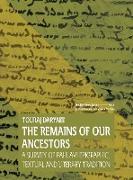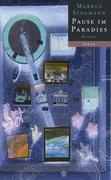The Remains of Our Ancestors
BücherAngebote / Angebote:
In Persian and Arabic sources the administrative language of the SasanianEmpire, and its possible courtly language was called Pahlavi. Today, we also use Middle Persianinterchangeably with Pahlavi to signify the literature produced during the phase betweenthe Old Persian and that of Classical Persian phases of the language. This short book aimsto discuss texts produced as inscriptions on coins, stone, papyri, parchment, leather andlater paper between the third and the tenth centuries CE. This survey is in some ways similarwhat has been produced by previous scholars, with two major differences.First, there is the attention to the works produced by scholars in Iran whose masteryof Classical Persian affords insights into Pahlavi texts which may not have been noticed byother scholars around the world. Secondly, rather than giving a monolithic reading of theliterature produced, the a historical classification based on the works of Alberto Cantera andMiguel Angel Andrés-Toledo is provided as the framework. I believe their reading of someof the Pahlavi provide a far better understanding and classification of these texts.This work was complete over two intensive Pahlavi summer schools at the University ofCalifornia, Irvine. As part of these classes, I had to prepare an introductory reading for thoseinterested in learning Pahlavi and used this text to provide an outline of Pahlavi literature.With the support of the Razi Family Foundation I was able to complete the work and thefollowing is the product of such endeavor. This is still a first look at a huge corpus from theSasanian and post-Sasanian Middle Persian literature which we only have begun to studyand understand. It is through the new generation of scholars who will provide new readingsand discussion of Pahlavi texts that we will be able to have a better understanding of whathas remained for us from the late antique Persianate World.
Folgt in ca. 10 Arbeitstagen




